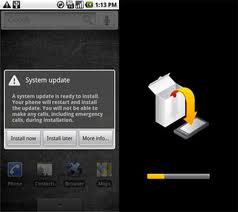 Droid, iPhone and Samsung Galaxy S (1 & II) owners have been known to get anxious waiting for updates for Android 4.0 or iOS 5. The wait is not just due to software development/testing but could also be due to network traffic.
Droid, iPhone and Samsung Galaxy S (1 & II) owners have been known to get anxious waiting for updates for Android 4.0 or iOS 5. The wait is not just due to software development/testing but could also be due to network traffic.
Android owners seem to have wait longer due to he development of the core Android update from Google, the carriers' added-on interfaces and testing. Now there is another element that affects the slow time it takes to get an update. Operating system updates put a greater strain on the networks than video traffic, reported Flash Networks.
Flash Networks, reported data showing that the amount of network bandwidth consumed by mobile operating system updates can threaten network performance, especially if delivered during peak traffic periods. This may explain why we have noticed that Verizon tends to release its updates slowly on Thursday, then in greater depth over the weekend. Most carriers don't allow updates while roaming. We always recommend completing a large update over Wi-Fi to ensure that the files don't get corrupted.
Based on traffic measured during Windows Phone and Android updates in Europe and North America, it was found that operating system upgrades sometimes consumed even more bandwidth than YouTube videos, creating significant bottlenecks.
This network clogging is expected to be dramatically increased in when Apple iOS5 is pushed out over the air (OTA).
Owners of the Samsung Galaxy S Captivate who waited almost a year for their Android 2.3 Gingerbread update had to download the update not Over-the-Air (OTA) but through Kies mini. When the update is downloaded via a computer it saves tremendous network bandwidth. Samsung used the Kies app for the Samsung Galaxy S 4G and Galaxy Tab. Samsung will not update to Android 4.0 for the popular Samsung Galaxy S line of smartphones but did promise updates for the Samsung Galaxy S II brand and for its latest tablets.
The burst in traffic for update can bring networks dangerously close to full capacity if the upgrades coincide with busy hours, such as commuting times, or popular browsing times late in the evening, reported Flash Networks.
In the United Sates, Windows updates increased upgrade traffic from 4.5% to 20%, an increase of more than four-fold.
In a few other cases observed by Flash Networks’ systems, the network bandwidth required to deliver an Android software upgrade climbed, on certain days and hours, up to 15% of total traffic and exceeded the bandwidth used for watching YouTube videos.
Flash Networks’ Harmony is a network based solution that optimizes backhaul and transit capacity which could help with future updates. Meanwhile we expect more download only to computer updates.
Thanks for delivering us the insight of this story.
Instead of requiring a Windows PC to perform an update to an Android device (hello, anyone else see the irony there) why not make sure that, as a bandwidth saving feature, future updates can have a set delivery method such as WiFi only? As in, instead of delivering the update itself, why note deliver a notification to the phone that an update is available and require WiFi to get it?